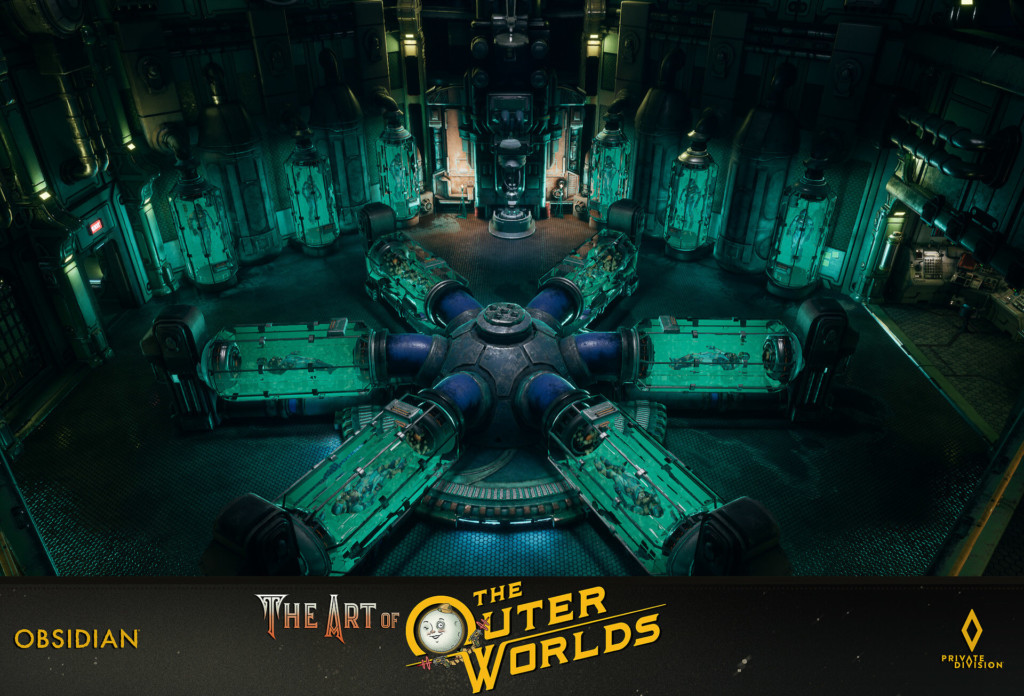By Nina Tabios
As a lighting artist for Obsidian Entertainment, Adriana Catarino likens the work she does on video games to painting on a canvas.
But of course, it is a lot more intricate than that. When asked to describe the nuances of her process, the Academy of Art University School of Game Development (GAM) 2018 graduate mentioned rendering, baked lighting, mesh, PBR range (or physically based rendering), optimizing—all of this to say that her job is essentially “making everybody else’s work look pretty.” However, getting it right is all about feeling.

“If you ever watch a movie and the sound is off, it immediately messes with you. It’s the same thing with lighting. It’s not something you see, it’s something you feel,” Catarino said on a phone call from Irvine, California. “If you’re watching a movie or playing a game and something about it feels weird, look at the lighting. That’s where you’ll find it doesn’t feel natural.”
In other words, if you don’t notice it, that’s when you know it’s done right. And an artist or specialist like Catarino might see the work they do as a cog in a bigger machine. But sometimes, those machines become some of the most buzzed-about video games, like Obsidian’s 2019 release, “The Outer Worlds,” which recently took home an armful of awards: Best Original Game for 2019 Game Critics Awards; Best RPG at the Titanium Awards; Best Game of the Year from New York Game Awards, as well as garnering category wins from the 2020 National Academy of Video Game Trade Reviewers (NAVGTR) Awards.
When Obsidian hired Catarino in 2018, “The Outer Worlds” was her first assignment. For the uninitiated: “The Outer Worlds” takes place during an alternate future in Halcyon, a hyper-corporate feudalist society living among the stars. The ruling class’s incompetence has left much of the colony in duress. The key to Halcyon’s salvation is the Stranger, whom gamers play as to combat, conquer, and coerce their way through the game’s missions.
Critics praised “The Outer Worlds,” which plays as a space frontier western, for the vast universe and gameplay that drips with a dark humor narrative.

“And if you know me, I like when there’s a political edge to stories,” Catarino added. “It’s a shooter game, [but] it’s really involved with choices and story. Personally, that’s what I prefer, more story-based games.”
Which makes sense since it was the early 2000s Nancy Drew-based computer games by Her Interactive that drew Catarino into gaming in the first place. She recalls them as fun and educational (“Whatever the topic was, it would teach everything about it throughout the game,” she said) but more importantly, those games were made with girls like her in mind.
“That’s what got me into playing games a lot. And the fact that it was centered for girls made a big difference,” she said. “When I played those games, I was like, ‘I want to do this.’”
And she’s been committed ever since. As a game design student who was, “interested in everything,” as her mentor and GAM Technical Lead Phil Kauffold described, Catarino was self-motivated and driven. Having a bachelor’s in animation from the Pratt Institute, she still took lighting classes at the Academy’s School of Animation & Visual Effects to round out the technical skills she was learning in game development.

That strategy worked well for her; by her senior year, Catarino pursued an ambitious virtual reality thesis project called “Junho,” based on the immigrant experience. Working closely with her, Kauffold said she was “sort of the person who could easily embrace new technology, who could learn to do new things.”
“She was really able to adapt and rethink, not get bogged down in trying to make things work in one particular way,” Kauffold said. “She would still be flexible enough to realize this very ambitious, artistic idea and what she wanted to establish in the narrative.”
To find out she contributed to “The Outer Worlds” was no surprise at all.
“She has both that tech side and art side and very much uses the technical side of her brain to realize the artistic vision that she has,” Kauffold said. Back then, Catarino was just scratching the surface of what she was capable of. And now that she’s at Obsidian, taking on award-winning projects now and in the future, only time will tell where gaming will take her.
“My goal is to slowly incorporate more lighting mechanics within games and do puzzles with lights. I think that would be interesting to do,” Catarino said. “I have all these ideas that stem from the game design side of it. And I like it, it’s different. Every day is a new problem, which I appreciate.”
